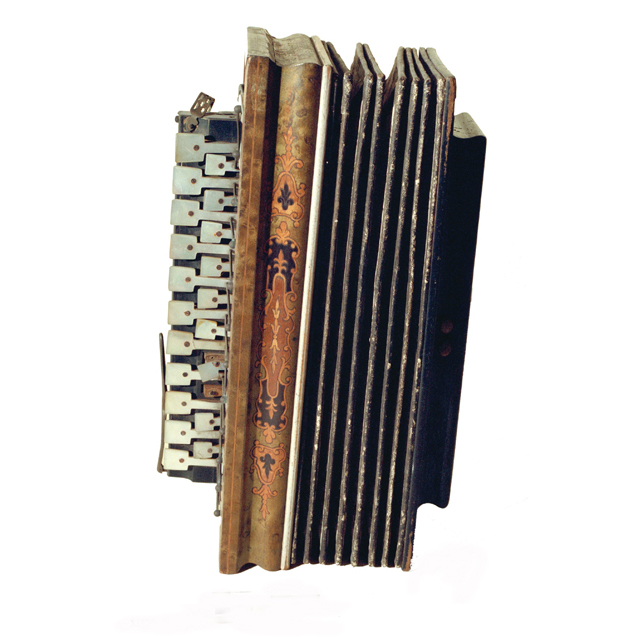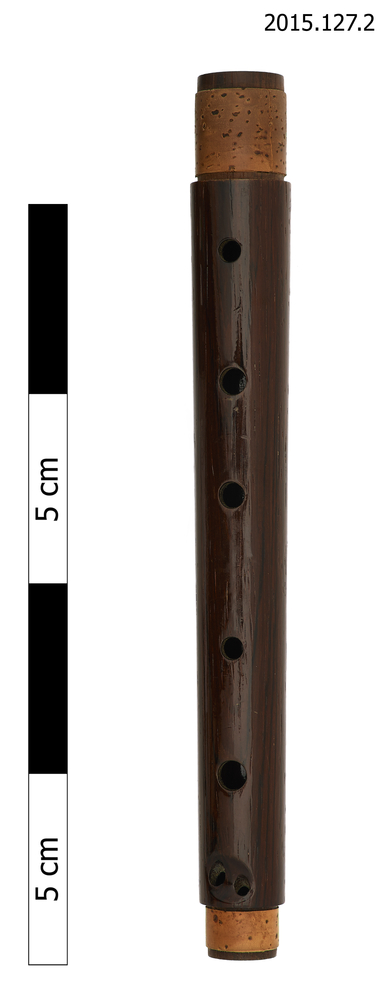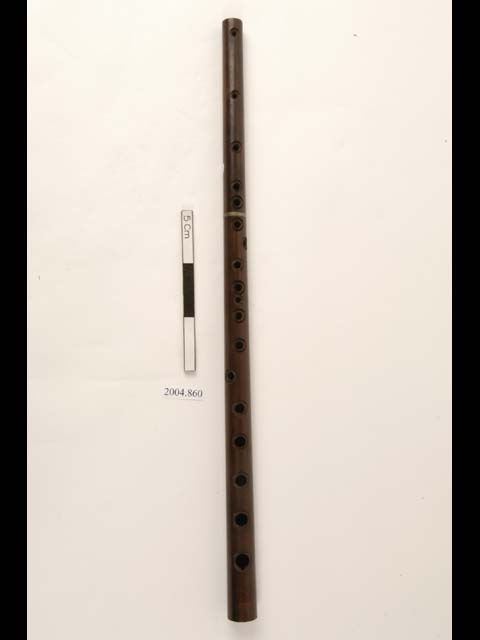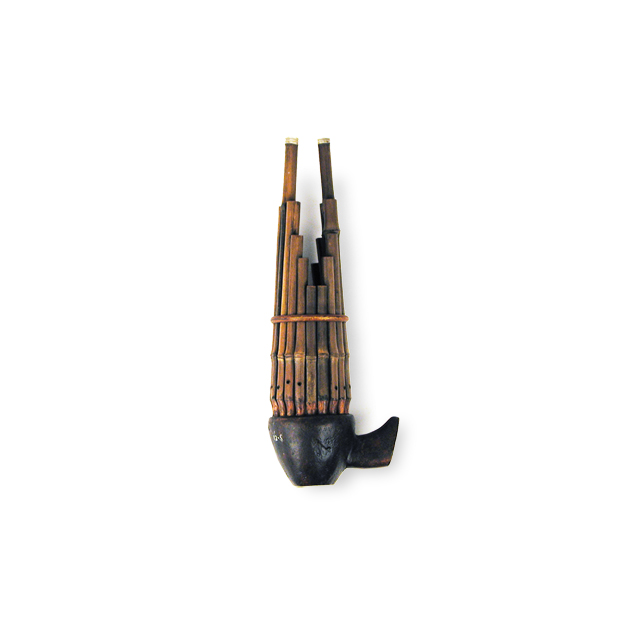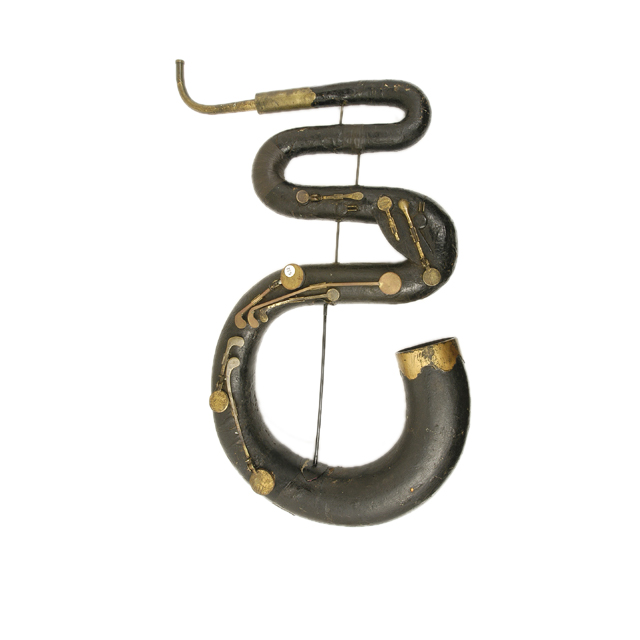
Serpent. Wooden body with black leather covering. Twelve keys, Saddle mounted, brass, with circular flat flaps and leather pads. Two keys missing. Brass crook, ferrules and braces. Crook has string lapped tenon.
The serpent is a lip activated wind instrument (so is classified as a brass instrument) with tone holes in the body to enable it to play different notes. It was originally employed to accompany Gregorian chant in churches. In the 18th century the serpent was adopted by many military bands, where it was popular until the mid 19th century when it was replaced by valved brass instruments. Like many woodwind instruments, the development of the serpent in the 18th and 19th centuries entailed the gradual addition of keys. This aided tuning as the optimal positioning of the holes was beyond the reach of the player's hands. The earliest keyed serpents had only two keys, but the final design had fourteen. This twelve keyed model therefore dates from the later part of the instrument's history.



